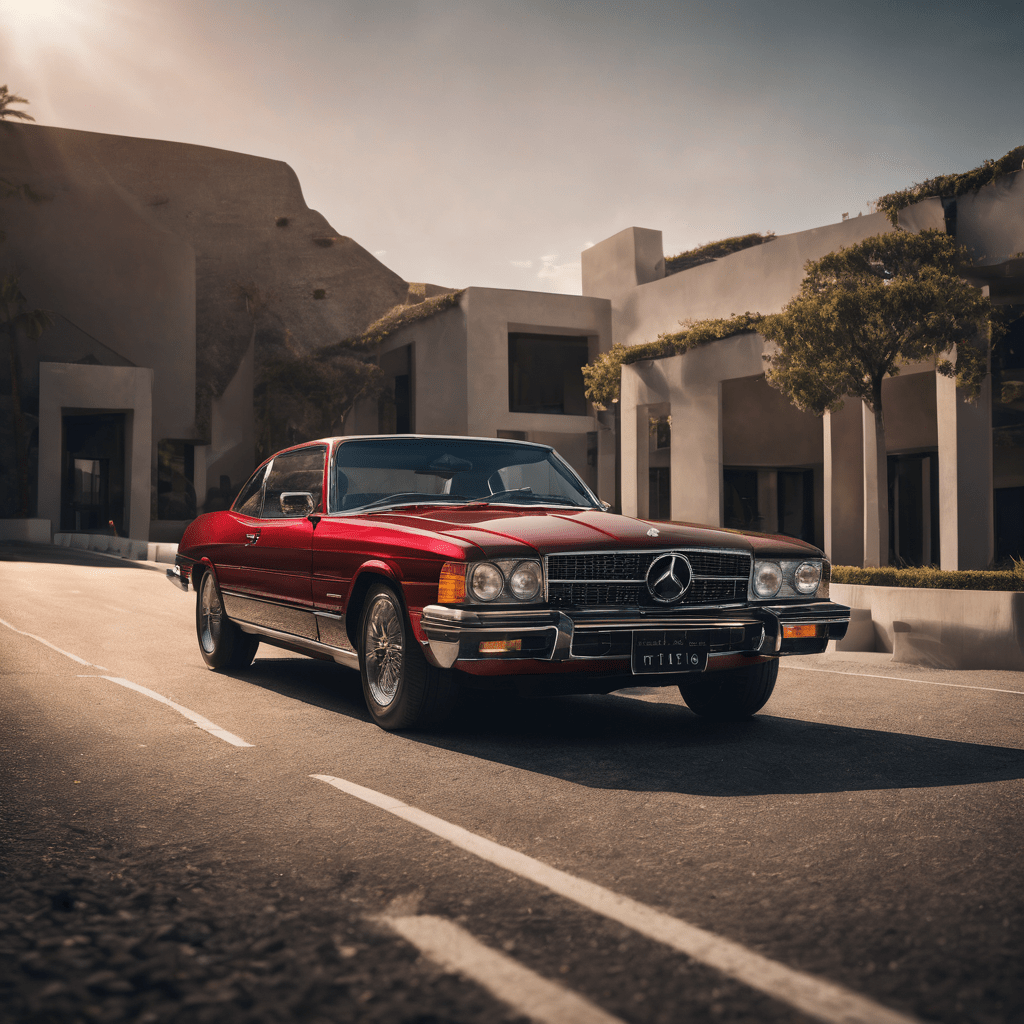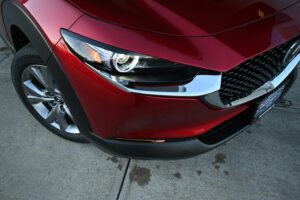
The Evolution of Coupe Cars Throughout History
Early Days: The Birth of the Coupe Car
The birth of the coupe car can be traced back to the early 20th century when automakers began experimenting with different body styles to cater to the evolving needs of consumers. One of the main motivations behind the creation of the coupe was the desire to combine the elegance and sophistication of a closed-top car with the sporty and dynamic elements of a convertible. The result was a sleek and stylish vehicle that offered the best of both worlds.
In terms of design, the coupe car featured a fixed roof, typically with two doors and seating for two or four passengers. It was characterized by its compact size, nimble handling, and aerodynamic profile, which made it ideal for weaving through city streets or cruising along open highways. These early coupes were often handcrafted and tailored to the preferences of individual buyers, adding an element of exclusivity to their allure. With their exquisite craftsmanship and attention to detail, these early coupe cars laid the foundation for the iconic status they would achieve in the years to come.
Classic Beauties: Iconic Coupe Cars of the 1920s and 1930s
One of the most fascinating eras in the history of coupe cars is the 1920s and 1930s. During this time, timeless designs and engineering marvels emerged, leaving a lasting impact on the automotive industry. These classic beauties were not only renowned for their stunning aesthetics but also for their performance and sheer luxury.
One such iconic coupe car from this era is the Bugatti Type 41 Royale. Built in limited numbers, this magnificent automobile was the epitome of extravagance. With its elongated hood, graceful curves, and powerful engine, the Royale was a true symbol of status and opulence. Another noteworthy coupe car from the 1920s is the Bugatti Type 35. This sleek and innovative model dominated the racing scene, showcasing the brand’s commitment to performance and precision engineering.
Moving into the 1930s, the Chrysler Airflow Coupe made waves with its cutting-edge aerodynamic design. This forward-thinking car featured streamlined bodywork and advanced engineering, setting a new standard for efficiency and style. Another popular choice from this time was the Duesenberg Model J. With its powerful engine, art deco styling, and unparalleled craftsmanship, the Model J was a favorite among the elite.
The coupe cars of the 1920s and 1930s represented a bygone era of elegance, craftsmanship, and innovation. These classic beauties continue to captivate car enthusiasts to this day and serve as a testament to the golden age of automotive design.
Post-War Innovations: Advancements in Coupe Car Design
Following the devastation of World War II, the automotive industry faced the daunting task of rebuilding and reinventing itself. This period of post-war innovations brought about significant advancements in coupe car design, fueling the imagination of car enthusiasts worldwide.
One notable development was the introduction of unibody construction, which replaced the traditional body-on-frame design. This revolutionary approach not only made coupe cars lighter and more agile, but also enhanced structural integrity and safety. Additionally, the post-war era saw the integration of aerodynamics into coupe car design, resulting in sleeker, more streamlined profiles that reduced drag and improved fuel efficiency. These innovations not only transformed the appearance of coupe cars, but also brought about improvements in their performance and handling. From the iconic Chevrolet Bel Air to the sleek Mercedes-Benz 300SL, post-war coupe cars exemplified cutting-edge design and engineering.
Without a doubt, the post-war era marked a turning point in the evolution of coupe car design. The advancements made during this time laid the foundation for the future, setting the stage for further innovation and pushing the boundaries of automotive engineering. As the decades continued, coupe cars would continue to captivate the imagination of car enthusiasts through their ever-evolving design, performance, and technological advancements.
The Muscle Car Revolution: Coupe Cars in the 1960s and 1970s
The 1960s and 1970s marked a revolutionary period for coupe cars, with the emergence of the iconic muscle cars. These vehicles were characterized by their powerful engines, sleek designs, and unparalleled speed. During this time, American automakers such as Ford, Chevrolet, and Dodge competed fiercely to create the most impressive muscle cars. The Ford Mustang, Chevrolet Camaro, and Dodge Challenger are just a few examples of the legendary models that captured the hearts of car enthusiasts worldwide.
The muscle cars of the 1960s and 1970s were more than just machines; they represented a cultural shift and a new sense of freedom on the open road. These vehicles were built for speed, with large displacement engines and aggressive styling that demanded attention. The unmistakable rumble of their V8 engines became the soundtrack of the era, symbolizing power and rebellion. The popularity of muscle cars soared, with enthusiasts eagerly embracing the exhilarating driving experience they offered. Whether it was cruising down the highway or drag racing on the strip, these coupes embodied the spirit of the times.
European Elegance: Coupe Cars from the Old Continent
European elegance is a hallmark of coupe cars from the Old Continent, renowned for their sleek designs and sophisticated styling. From the luxurious Alfa Romeo 8C 2900B Touring Coupe to the iconic Jaguar E-Type, European manufacturers have consistently produced coupes that exude elegance and class. These cars were not only designed to turn heads but also to provide an exhilarating driving experience, combining power and performance with unmatched refinement. From Italy to Germany to the United Kingdom, coupe cars from Europe have set the standards for style and craftsmanship in the automotive world.
One of the most notable European coupes is the Mercedes-Benz 300SL Gullwing, introduced in 1954. With its distinctive upward-opening doors and aerodynamic design, the Gullwing became an instant classic. The stunning beauty is not only in its exterior, but also in its engineering excellence. Its advanced fuel-injected engine, cutting-edge suspension system, and lightweight construction made it a true marvel of automotive engineering. Even today, the Mercedes-Benz 300SL Gullwing remains an iconic symbol of European elegance and innovation, representing the golden age of coupe cars from the Old Continent.
The Rise of the Japanese Coupes: Unique Offerings from the East
Japanese automobile manufacturers have certainly made their mark in the automotive industry, especially when it comes to coupes. With their unique offerings, Japan has brought a fresh perspective to the world of two-door cars. From sleek and sporty designs to exceptional performance capabilities, Japanese coupes have captured the attention of car enthusiasts around the globe.
One of the standout models from Japan is the Nissan GT-R. Originally introduced in 1969 as the Skyline GT-R, this iconic coupe has evolved over the years to become a powerhouse on the roads. With its aggressive styling and advanced technological features, the GT-R delivers a thrilling driving experience. It is known for its lightning-fast acceleration and precise handling, making it a favorite among performance car aficionados. Other notable Japanese coupes include the Mazda MX-5 Miata, renowned for its perfect balance and driving dynamics, and the Honda Civic Type R, which combines a sporty design with impressive power. Overall, the Japanese have certainly made their mark in the world of coupes, providing unique offerings that cater to a range of tastes and preferences.
Modern Marvels: Technological Advancements in Coupe Cars
In recent years, technological advancements have revolutionized the world of coupe cars. These modern marvels have experienced significant improvements in various aspects, making them more efficient, advanced, and enjoyable to drive.
One notable technological advancement in coupe cars is the integration of advanced safety features. With the development of sensors and cameras, coupe cars can now detect potential collisions and automatically apply the brakes to avoid accidents. Additionally, many coupe cars now come equipped with lane departure warning systems, which alert drivers if they unintentionally drift out of their lane. These safety features not only enhance the overall driving experience but also prioritize the well-being of both the driver and passengers. Furthermore, the integration of these safety technologies has played a crucial role in reducing road accidents and fatalities.
Electric Dreams: The Evolution of Coupe Cars in the Electric Era
As we embrace the electric era, coupe cars are undergoing a fascinating evolution. The shift towards electric power has presented unique opportunities and challenges in designing coupe cars that not only deliver on performance but also embody sustainability. One of the prominent advancements in this era is the development of electric drivetrains, which have significantly transformed the driving experience of coupe cars.
With electric powertrains, coupe cars have witnessed a surge in acceleration capabilities. The instant torque provided by electric motors allows these vehicles to achieve impressive speeds in no time. Moreover, the absence of a traditional combustion engine offers a quieter and smoother ride, enhancing the overall comfort for passengers. The electric era has also brought about advancements in battery technology, enabling coupe cars to have greater range and reducing the need for frequent charging. Additionally, innovative regenerative braking systems help recharge the battery while decelerating, maximizing the coupe car’s efficiency.
Customization and Personalization: Tailoring Coupe Cars to Individual Tastes
Coupe cars have long been a favorite among car enthusiasts due to their sleek and stylish design. However, what truly sets them apart is the ability for customization and personalization, allowing owners to tailor these cars to their individual tastes. From exterior modifications to interior upgrades, coupe cars offer a wide range of options for customization.
One popular way to personalize a coupe car is through custom paint jobs. Whether it’s a vibrant and eye-catching color or a subtle and understated finish, the right paint job can completely transform the look of a coupe car. Additionally, accessories such as spoilers, body kits, and custom exhaust systems can further enhance the exterior aesthetics, giving the car a unique and personalized touch.
Future Perspectives: What Lies Ahead for Coupe Cars?
In the ever-evolving world of automobiles, coupe cars have stood the test of time, capturing the hearts of enthusiasts around the globe. As we venture into the future, it is evident that coupe cars will continue to push the boundaries of design and performance. With advancements in technology and a growing consciousness towards sustainability, the future of coupe cars promises an exciting journey ahead.
One of the major trends we can expect to see in the future of coupe cars is the integration of autonomous driving technology. As self-driving capabilities become more refined, coupe cars will offer a seamless blend of power and convenience. Imagine a coupe effortlessly maneuvering through busy city streets while the driver relaxes in the luxurious cabin. While still offering the option for manual control, the future coupe cars will provide a transformative driving experience where drivers can choose their level of engagement with the vehicle.








